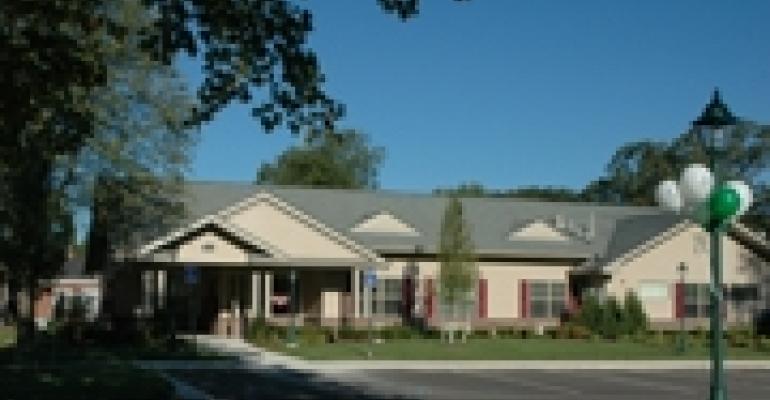
Amid increased competition from other housing types, nursing home owners and operators are repositioning their buildings to maintain market share. In contrast to the old-style hospital-like nursing homes of the past, new buildings have a residential feel.
Developers are locating nursing homes near assisted living and independent living apartments to create a campus environment. And many operators are beefing up services to capture profitable short-term stay residents.
"Nursing homes are still the 800-pound gorilla of seniors housing," says Michael Hargrave, director of research at the National Investment Center for Seniors Housing and Care Industry (NIC) in Annapolis, Md. "But nursing homes are being attacked by other forms of housing that are very innovative."
In the top 30 metro areas, the number of nursing homes has remained essentially flat over the last two years at about 4,500 buildings, according to NIC data. During the same period, the number of beds has declined about 1% to 572,334. Occupancies are unchanged at about 90.7%.
Construction of new nursing homes represents about 0.5% of existing inventory annually, says Hargrave. But, he adds, the number of new facilities is offset by the closure of old ones.
Meanwhile, the number of independent living apartments in the last two years increased by 24%, and assisted living buildings were up by 14%. Occupancies at these buildings are slightly higher than at nursing homes. "The other segments of service-enriched environments are growing," says Hargrave. "It's something nursing homes need to pay attention to."
But nursing homes face challenges other property types don't. Most states require operators to obtain a Certificate of Need (CON), which involves an expensive process. State regulations dictate certain building features for resident safety. And nursing home operators are dependent on Medicare and Medicaid, government programs with ever-changing reimbursement rules.
Another big problem: the median age of a free-standing nursing home is 32 years. "There are a lot of old buildings out there," says Hargrave. "And the [housing] alternatives offer new care techniques." But a growing number of nursing homes do, too.
Small homes for as few as 10 residents are being built under the guidelines of the Green House project. Conceived by Dr. William Thomas, a well-known activist in the long-term care industry, the idea is to downscale the size of the housing in order to make residents feel like they're living in a regular house. Several Green House projects operated by non-profit organizations are open around the country.
For-profit operators are updating their product to capture consumer approval, too. Take, for example, developer Smith/Packett Med-Com LLC of Roanoke, Va. The company owns 30 communities, and it has six new nursing home projects under construction. The nursing homes are typically part of a campus that includes other types of seniors housing. No entry fees are charged, and residents pay only for services they use. "We try to make the environment as residential as we can," says Bruce Hedrick, senior vice president of development at Smith/Packett.
Some of its campus projects — with price tags of as much as $125 million — include a town center with old-fashioned building facades reminiscent of a traditional main street with shops. But most construction dollars are spent on three elements: a prime location, the building's lobby, and resident rooms. "Those are the areas the resident or the adult children look at," says Hedrick.
Smith/Packett includes as many private rooms as possible in new nursing homes because that's what consumers want. In a typical nursing home with 90-120 beds about 15% to 25% of the rooms are private, Hedrick says.
Also, Smith/Packett has focused on capturing short-term stay residents. These are people who have been discharged from the hospital after illness or surgery, but who are not yet ready to return home. Medicare reimburses their stay at a rehabilitation unit of a nursing home, making it a profitable service for nursing homes.
Hedrick sees upside in that part of the business, noting that 35% of those age 60 and over will at some point spend time in a nursing home. As Hedrick notes, "Nursing homes are not going away.”

